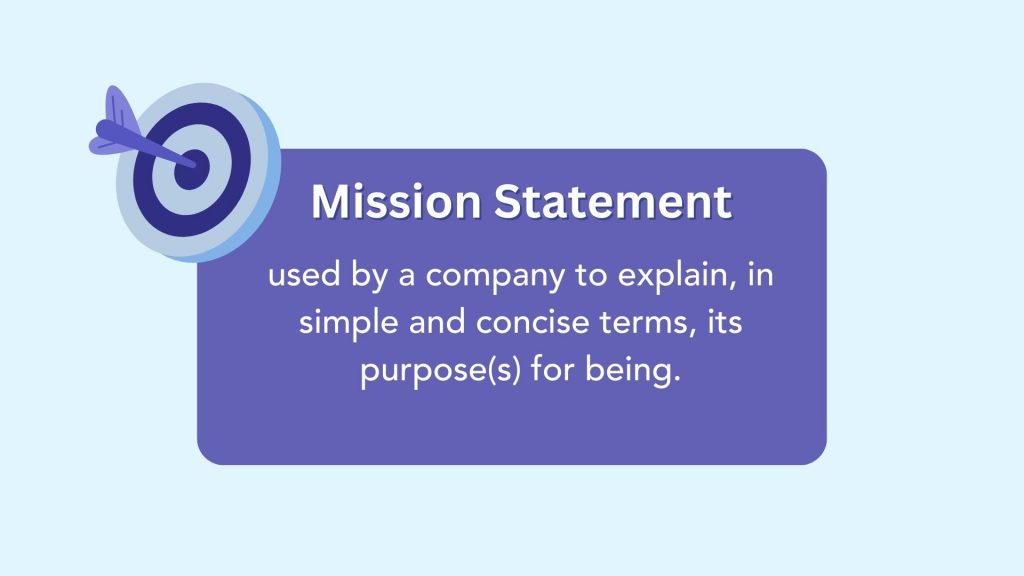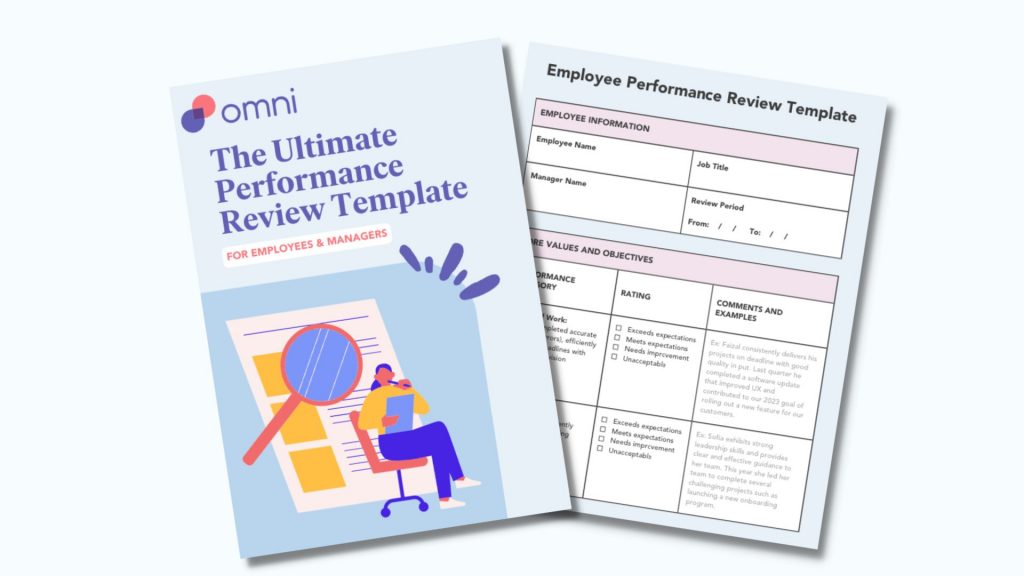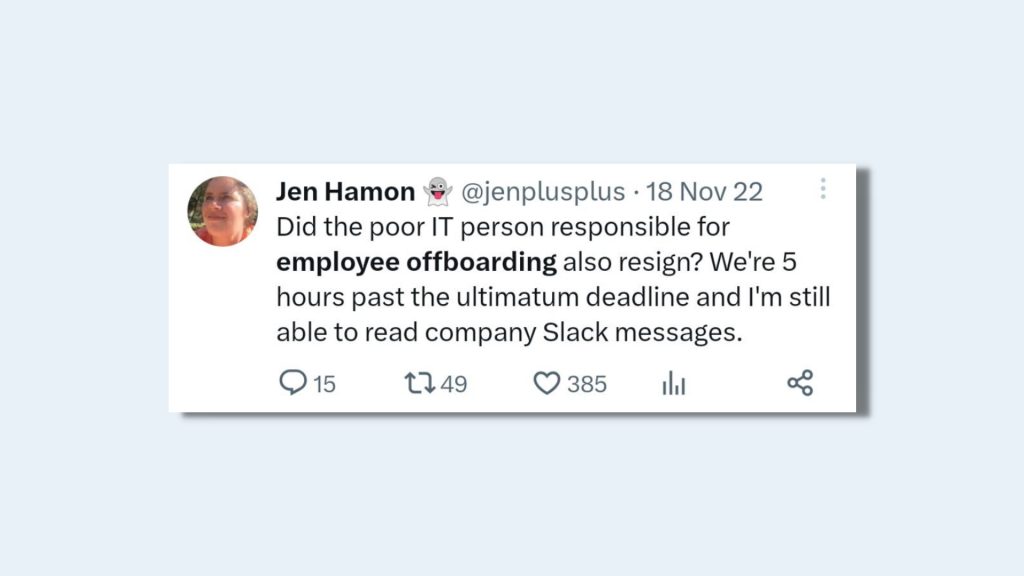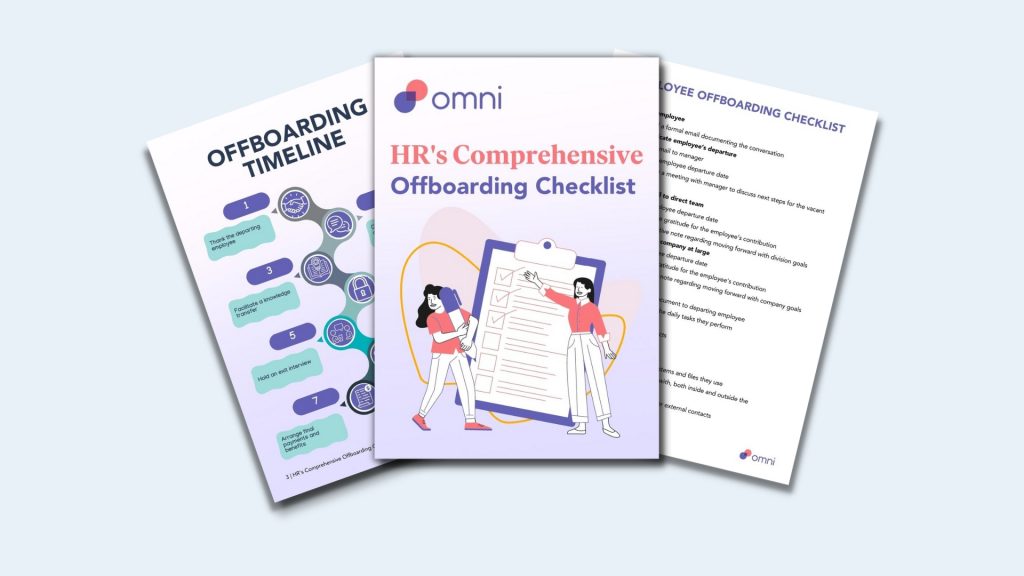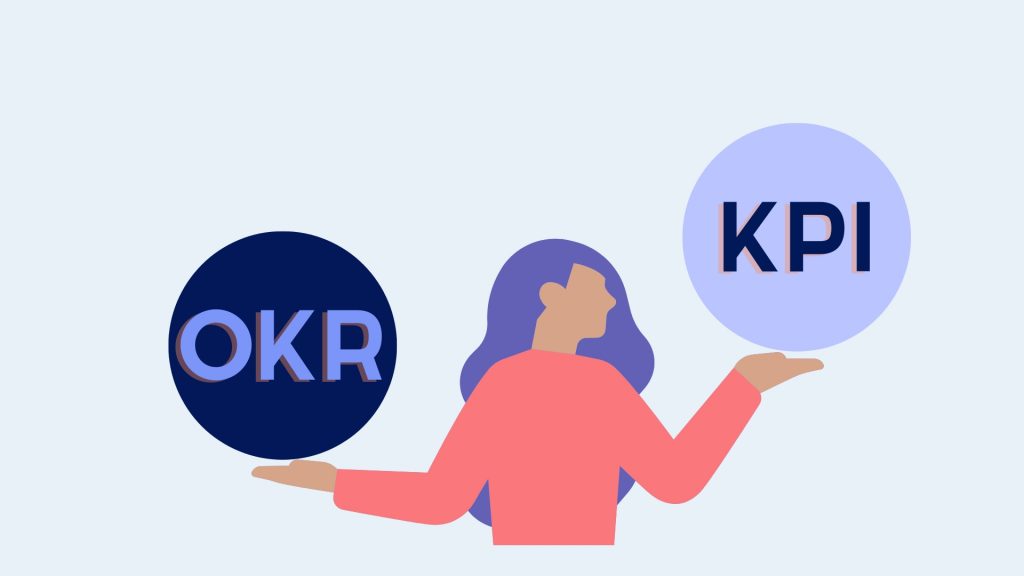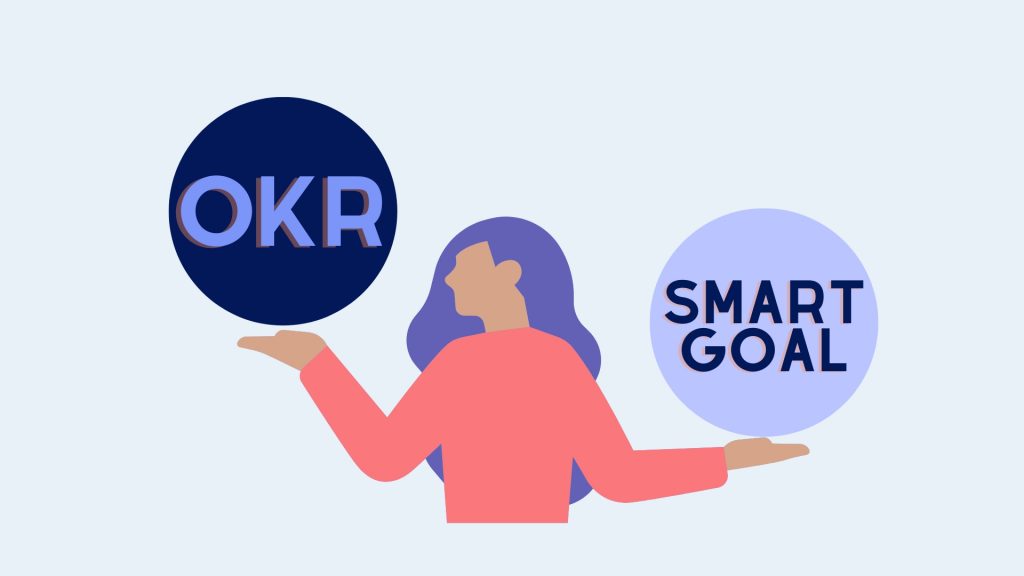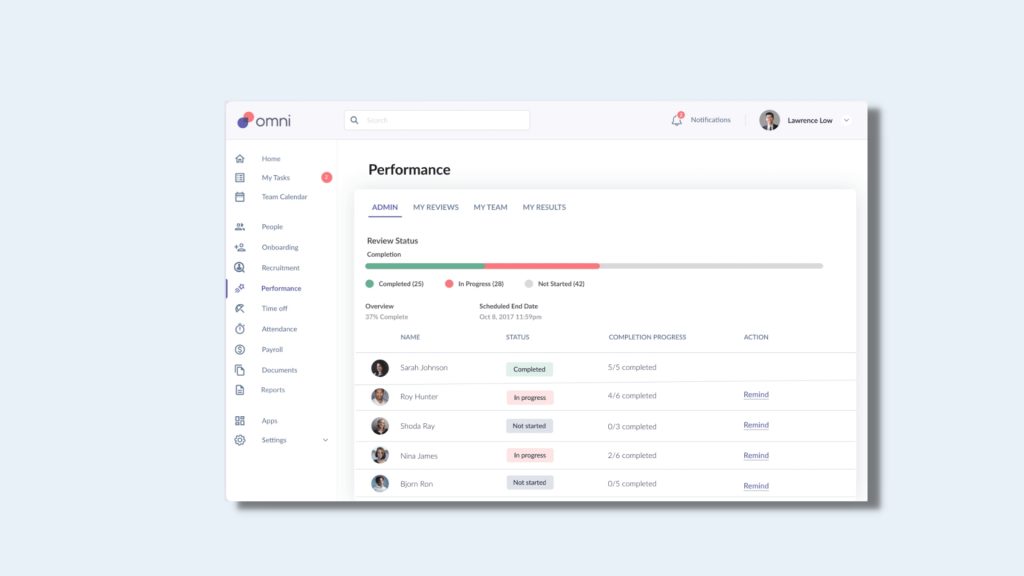Remote work was already on the rise before the pandemic, but numbers simply skyrocketed after offices shut their doors in 2020. Companies all over the world have now adopted remote work into their company strategies. In a recent study, Gartner estimates that by the end of 2023, 48% of knowledge workers around the world will work either fully remotely (9%) or in a hybrid arrangement (39%). In the US, fully remote and hybrid workers are expected to account for 71% of the workforce in 2023.
The transition from on-site to remote workforce management is rife with unique challenges and opportunities for expansion of company culture, broadened reach for talent, and new technology (like AI tools for HR) to support this digital era. When done right, remote workforce management can ignite innovation, cut costs, and build an inclusive culture capable of easily spanning international borders.
Whether your company manages fully remote or hybrid teams, there are strategies you can implement to increase employee satisfaction and retention, improve training, and streamline onboarding and performance reviews.
What is Remote Workforce Management?
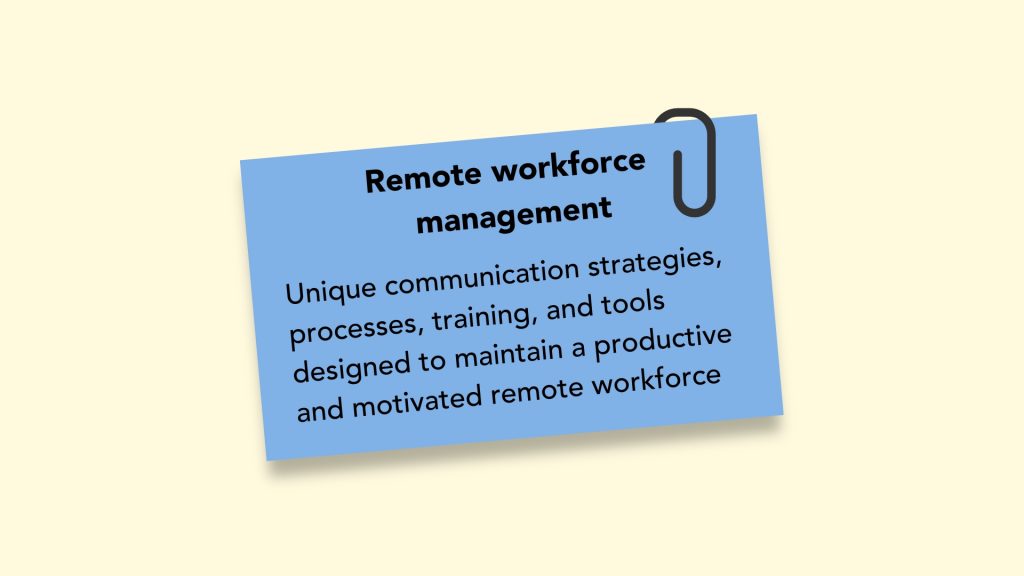
Remote workforce management is simply the practice of managing teams of remote employees. It commonly involves unique communication strategies, processes, training, and online platforms designed for maintaining a productive and motivated remote workforce.
Knowing how to manage, train, and motivate a remote workforce is key to ensure productivity and employee retention. The State of Remote Work Report 2022 found that, “If the ability to work from home was taken away, two-thirds (66%) of workers would immediately start looking for a job that offered flexibility, and 39% would simply quit.” Which indicates that remote work isn’t going anywhere. And companies hoping to maintain relevancy and entice top talent will need to master remote workforce management.
Challenges of Remote Workforce Management and How to Overcome Them
With the many advantages of remote workforce management come a few challenges. In order to have the tools and tactics to navigate them, it is first important to understand what the specific challenges of remote workforce management are, and learn about proven strategies to overcome them.
Common Challenges of Remote Workforce Management
While there are many similarities in remote workforce management and traditional, in-person employee management, the absence of a physical office poses its own challenges for employees and managers alike. Understanding these challenges is the first step to overcoming them.
Lack of face-to-face interaction and oversight
In some cases, when managers are not physically present to supervise and offer support, workers become less efficient. Face-to-face interactions encourage both community building and accountability. In the case of remote work, you can implement processes and technological tools to overcome these challenges.
Feeling of social isolation
Though they may be surrounded by dozens of people in a virtual space, remote workers are often physically isolated. A smile, a joke, a quick coffee run, these gestures translate rather differently online than in real life. Finding a way to reduce the feelings of social isolation is one of the most important challenges of remote workforce management. This can be achieved by implementing virtual social events and using a variety of communication tools, and is a great way to tackle signs of employee burnout.
Insufficient access to information
In a remote setting, information flows differently than in-person workplaces. Accessing basic data can sometimes become a challenge. Moreover, the absence of non-verbal clues (such as body language) and water-cooler-talk can hinder interpersonal relationships. When teams bond in-person and regularly interact with each other, they are more likely to know who to ask when they need information or assistance.
With modern HRIS platforms, remote teams can seamlessly share information in real time. These platforms also provide ample opportunities for locating important documents and asking and providing feedback and support.
Distractions
All workers juggle various responsibilities both in their professional and personal lives — yet remote workers have the flexibility and proximity to be more easily distracted by these responsibilities. Without a clear delineation between work and home, it’s easy for remote workers to get pulled away from their work. Having a dedicated workspace designed to minimize distractions is the ideal situation, but employees sometimes struggle to find such a space at home.
Aside from home life distractions, online distractions can also be problematic. Remote work management requires effective tools to ensure concentration and focus throughout the work day.
Key Considerations for Building a Strong Remote Workforce Management System
There are many actions you can take today to address the challenges of remote workforce management and help your employees achieve productivity and efficiency. Now that you’re familiar with the common challenges of remote workforce management, let’s examine best practices for building a strong management system.
Structured Check-ins
Establishing structured and frequent check-ins, such as video or audio conferencing, can help diminish your remote workforce’s sense of isolation or lack of direction. Team calls can be great for aligning objectives, while 1-on-1 meetings are ideal for inquiring about concerns and offering support.
Frequent check-ins with clean agendas help keep employees engaged, and removes any bottlenecks that delayed communication may present. We recommend scheduling standing meetings both with your larger teams as well as direct reports to your remote workforce management strategy.
Encouraging regular feedback
Regular feedback has a significant impact on employee engagement. According to Achievers, 44% of employees who were unhappy with the company’s feedback system searched for a new job, whereas 28% of the surveyed employees who found their company great at giving feedback, chose to stay. Encouraging regular, positive and negative feedback, promotes open communication and improves employee output.
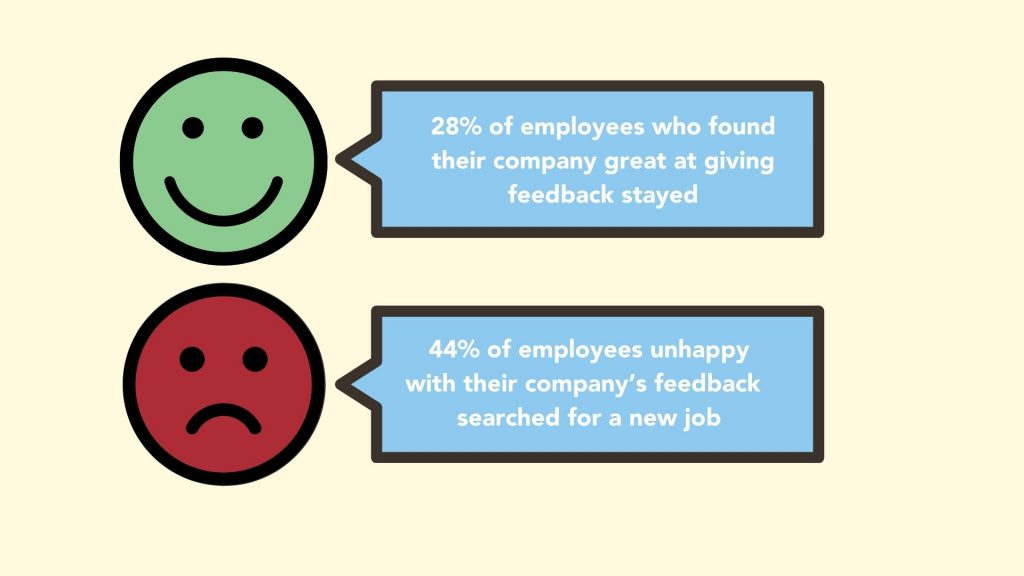
Communication tools
Having a variety of digital tools at their disposal can keep remote workers to be more engaged and connected with their teams and managers. Adding dedicated video conferencing and instant messaging platforms to your remote workforce management communication strategy can provide a variety of real-time communication options that can help remote workers to effectively communicate.
Choosing communication tools for your needs
Consider the types of communication your organization partakes in. Chances are, there’s a variety of styles taking place in a single day, which means you’ll most likely benefit from a variety of communication tools. Some sensitive conversations may require one-on-one video chat, while quick questions to the team can be posted on a forum, and other types of inquiries can be made via private messages.
Establish a set of rules of engagement
If you want to keep employees engaged and boost productivity, establishing clear rules and expectations such as remote work policies, communication expectations, and general rules of engagement is key in remote workforce management.
Providing employees with clear expectations and guidance sets them up for success, and can help curb many of the pain points managers often face in remote workforce management. To do so, ensure that your employee handbook adequately addresses the expectations and regulations surrounding remote work and take some time to go over these expectations with your employees.
Encourage social interaction
The water cooler may be missing, but you can still generate opportunities for non-work related connections that prioritize employee engagement.
There are many useful techniques to encourage remote social interaction. For example, allowing a few minutes before team meetings to catch up on personal happenings, asking about everyone’s weekends, or wishing someone a happy birthday. You may also host virtual parties, mail theme party packages in advance of virtual gatherings, and even host live events for employees who live in the same area. Whatever your strategy, enhancing remote team communication goes a long way in mastering remote workforce management.
Implement remote onboarding practices
A successful onboarding process is vital for employee engagement, productivity, and retention. In the case of remote workers, the logistics of remote onboarding is unique. Without opportunities for in-person training, you have to design the best strategies to effectively convey your company’s mission and culture to new hires. Building a consistent and comprehensive remote onboarding process helps to set clear expectations and connects new hire’s work with the company’s vision and mission..
With HR software, you can make use of dedicated processes to efficiently onboard workers remotely, boosting engagement and increasing talent retention. For example, Omni offers various tools such as Onboarding Email Templates to help you streamline your remote onboarding process.
Remote employee development
Effective training and employee development opportunities are at the heart of every successful remote workforce management strategy. You can boost your employee development by offering mentoring sessions, leadership training, and other opportunities for career advancement.
Continuous learning
By creating frequent training opportunities, you allow employees to find the times that best suit their personal circumstances. Live streaming training sessions can be great to connect in real time, but you should always ensure a link with the recorded session is immediately available to anyone who was unable to attend, for example, if they are in a very different time zone.
Setting clear expectations
Remote workers need a framework they can work with. They need to know what is expected of them from early on. They must be aware of the company’s priorities as well as what is expected of them to succeed in their role.
By setting clear expectations, such as working and non-working hours, you help employees achieve a healthy work-life balance in a remote setting, which combats burnout, and improves productivity.
Setting and maintaining remote policies
Remote policies are different from on-site policies. If you have newly implemented a remote workforce, take the time to adapt your standard policies and create new ones that reflect your remote team’s circumstances. You may include productivity and schedule requirements, communications etiquette, and any other rule that can help facilitate remote work in your remote workforce management strategy.
Performance management
Performance management is an essential part of any HR management strategy. Aside from frequent check-ins, clear expectations, continuous learning, and open communication, goal setting is an important part of managing remote employee performance.
Implementing a consistent and comprehensive performance review process can help keep your teams on track, and guide managers in creating actionable plans through goal setting. SMART goals and KPIs are an impactful tool for guiding performance within remote workforce management, and can help keep remote workers engaged and motivated.
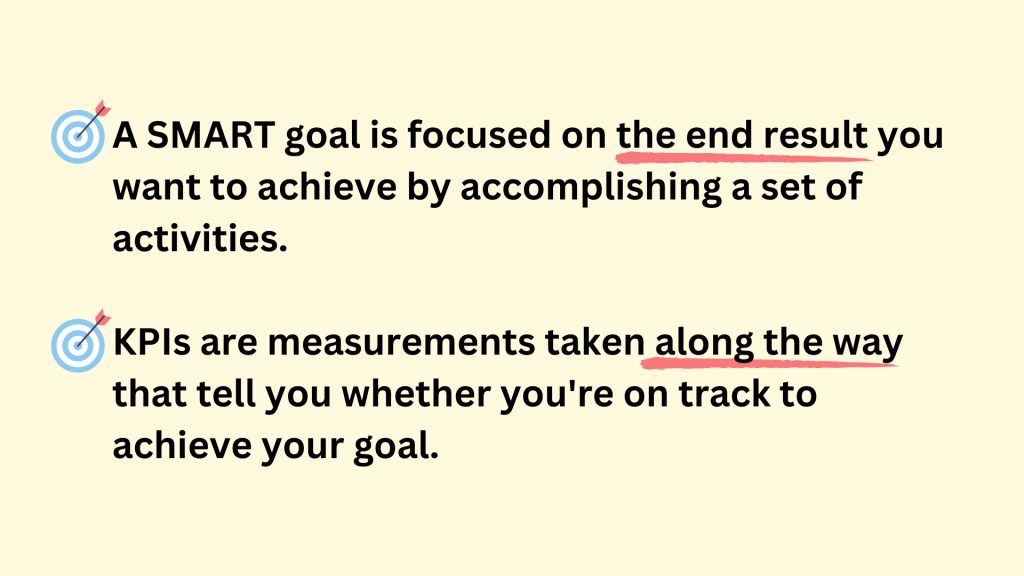
Virtual leadership
All leadership requires tact, and your employees will have their own unique communication styles that will require various approaches to remote workforce management. While these styles may vary, there are some key tenants to virtual leadership that managers should abide by to best support their teams.
These key tips for remote team management include:
Favor mentoring over micromanaging
While remote workforce management requires closer oversight to ensure employees are engaged, transactional leadership and micromanagement discourage employees from performing at their best. Instead, focus on mentorship to invest in the skills and growth of your workforce. Understanding and exhibiting the leadership qualities of impactful managers will help you better connect and guide your remote employees, resulting in engagement and innovation.
Set clear goals and focus on outcomes rather than input
There’s a lot that can get lost in translation in a remote environment, so setting clear goals for your teams helps cut through any confusion and miscommunications. Rather than focusing on how your employees reach their goals, shift your focus to the outcomes of their work. This gives autonomy to your teams and empowers employees to manage their workload.
Build trust and support
Trust is a foundation for successful remote workforce management. Take the time to build trust with your team members by being reliable, transparent, and supportive. Provide frequent feedback and recognition for their achievements and encourage autonomy to empower team members to make decisions. By creating a supportive environment, you can foster trust and enhance team morale.
Embrace technology and remote tools
Utilize technology and remote tools to streamline workflows and enhance productivity. Invest in reliable communication platforms, project management software, and collaboration tools like all-in-one HR software. Provide training and support for your team to ensure they are proficient in using these tools effectively. Embracing technology can help bridge the gap created by remote work and enable smoother operations.
Prioritize work-life balance and wellbeing
Virtual work can blur the boundaries between personal and professional life. Encourage your team members to maintain a healthy work-life balance by setting clear expectations around working hours and time off. Promote self-care practices and encourage regular breaks, and be empathetic and understanding towards the unique challenges of remote work. By prioritizing well-being, you can promote a positive and sustainable work culture.
Master Remote Workforce Management with Omni
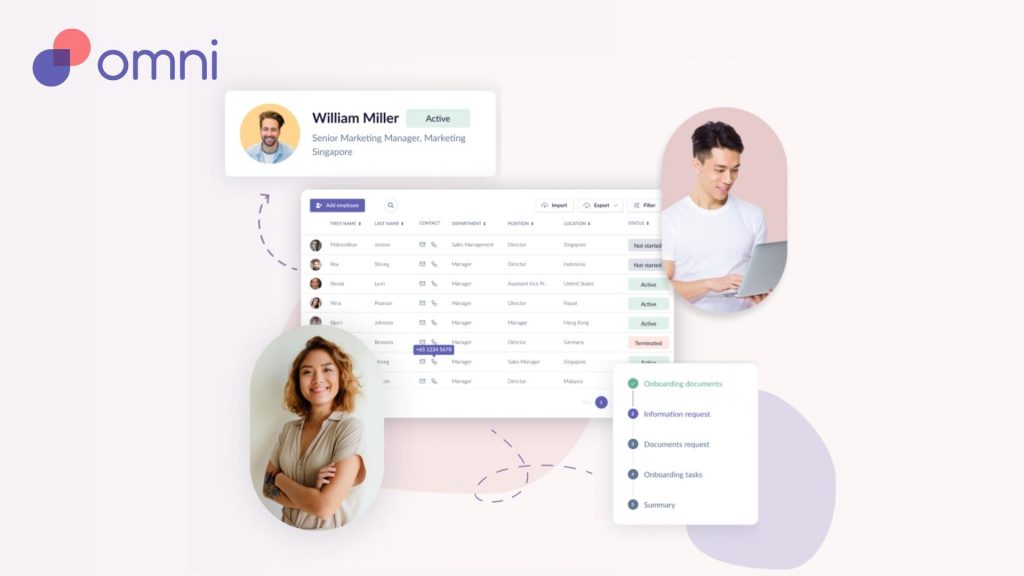
Remote workforce management requires thoughtful leadership and clear strategy to ensure success. With the right tools and tactics, managers and HR leaders can build a thriving remote workforce that centers wellness, productivity, and inclusivity.
Through the various strategies and tools to manage, leveraging automation can make all the difference in ease and flow of remote workforce management.
With Omni’s all-in-one platform, you can easily manage remote teams and schedules, conduct performance reviews, obtain valuable performance data, streamline onboarding, and encourage effective communication among remote employees and managers all while automating time consuming and error-prone administrative tasks.
Omni provides a variety of automated processes and metrics that can help you support and engage your remote workforce. Ultimately, successful remote workforce management can drive business growth, making both remote and hybrid teams more efficient.
If you are interested in seamless, elevated and better focused remote workforce management, book a demo with our team today to learn more about how you can leverage Omni to champion your remote teams.



